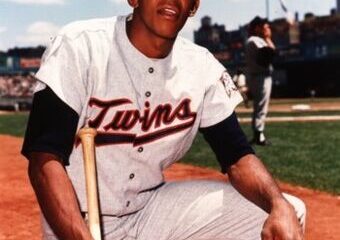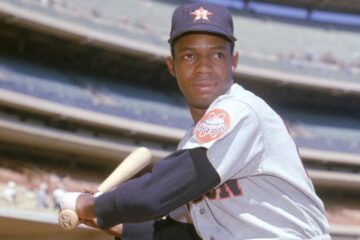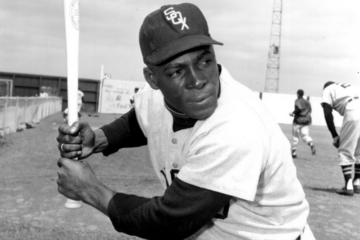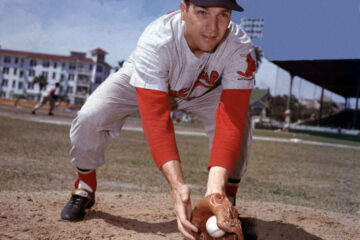The Hall of Fame Index: Derek Jeter
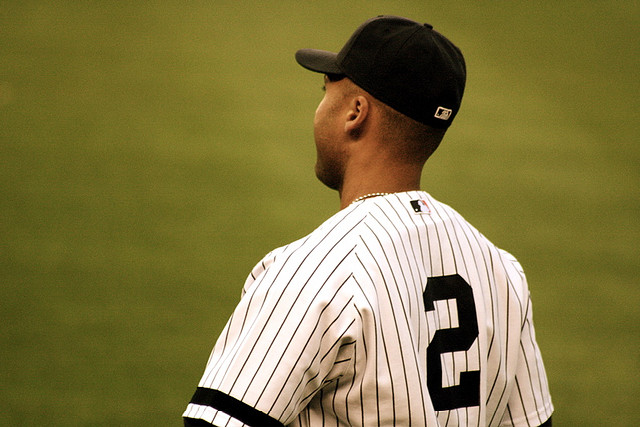
The Hall of Fame selection process is fascinating and a number of very good books have been written about the process itself. Breaking that process down into a few sentences doesn’t do it justice, but I will try just the same. Essentially, in order to be eligible you have to play at least ten seasons in the big leagues. As you might imagine, that disqualifies a majority of players. From there, a screening committee selects who will actually appear on the ballot.
For our purposes here, I have become a screening committee of one. Looking out on the landscape at current shortstops, I see several players that might end up becoming Hall of Famers someday, but none of them are there now. So, I’m taking this space to look at one of the most controversial players of our generation: Derek Jeter. Mind you, there is nothing he has done to particularly make him controversial. He was clean as far as we know and he played with a ton of integrity. It’s just that opinions on him differ wildly depending on who you talk to.
Before we get there, let me remind some folks who may be joining us late about what we’re doing. Several years ago, I wrote The Hall of Fame Index in an effort to crystallize the debate at each position. I am presenting a truncated version here to help us look at Jeter and the issues surrounding his candidacy. I’ll try to talk us through the process so that it hopefully makes more sense when we reach our conclusion.
Career Value
| BR | BP | FG | Total | |
| Honus Wagner | 131.0 | 134.5 | 138.1 | 403.6 |
| Cal Ripken | 95.5 | 73.8 | 92.5 | 261.8 |
| Robin Yount | 77.0 | 77.7 | 66.5 | 221.2 |
| Luke Appling | 74.5 | 73.6 | 72.7 | 220.8 |
| Ozzie Smith | 76.5 | 61.7 | 67.6 | 205.8 |
| Barry Larkin | 70.2 | 66.9 | 67.0 | 204.1 |
| Joe Cronin | 66.4 | 66.5 | 66.6 | 199.5 |
| Lou Boudreau | 63.0 | 63.7 | 64.5 | 191.2 |
| Ernie Banks | 67.4 | 57.8 | 63.3 | 188.5 |
| Luis Aparicio | 55.7 | 46.8 | 49.1 | 151.6 |
| Rabbit Maranville | 42.8 | 42.7 | 42.5 | 128.0 |
| Derek Jeter | 71.8 | 59.3 | 71.7 | 202.8 |
First, a few words about what you are looking at. Instead of evaluating the basic counting numbers, I instead chose to look at the WAR scores for the three most popular sites where you can find them. Mind you, Baseball Prospectus (BP) does not have them for players before 1950. So, those scores for effected players are approximated based on their numbers for Baseball Reference and Fangraphs. The idea behind using all three can be seen when you look at the stark differences between all three for some of the players. The mathematicians behind each of those have varying ideas of how to weight certain events that happen on the diamond and how to normalize for ballparks and eras. As a humble English teacher, I’m not about to challenge any of them on their assumptions. I also don’t feel qualified to choose between them. So, we go with a combination of all of them.
The point of the index is not about accurately ranking players. It is about measuring their fitness for the Hall of Fame. What we find when we look at most positions is that even though players bring their unique style and talents to the game, their talents and production end up coming with very similar value scores. So, we don’t pick an arbitrary number and draw a line. Instead, we look for gaps in the data and when we see that we usually find a natural line between who should be in and who should be out.
We also see mistakes. I purposely leave out the Veterans Committee because their selections would only cloud the process. Luis Aparicio and Rabbit Maranville are clear outliers when we look at the career value data. Derek Jeter falls right in line with the rest of the guys. He is very similar in value to Ozzie Smith and Barry Larkin. Since they are fairly recent players, those comparisons make some sense even if they are three very different players. The point is that they brought similar value in wins to their teams.
Peak Value
| BR10 | BP10 | FG10 | Total | |
| Honus Wagner | 84.7 | 87.4 | 90.2 | 262.3 |
| Cal Ripken | 69.5 | 59.2 | 66.3 | 195.0 |
| Lou Boudreau | 59.8 | 60.4 | 61.0 | 181.2 |
| Robin Yount | 55.2 | 61.3 | 50.1 | 166.6 |
| Ernie Banks | 58.0 | 53.1 | 53.6 | 164.7 |
| Joe Cronin | 50.3 | 50.5 | 50.7 | 151.7 |
| Barry Larkin | 52.4 | 47.0 | 50.5 | 149.9 |
| Ozzie Smith | 54.8 | 41.8 | 50.0 | 146.6 |
| Luke Appling | 48.2 | 48.2 | 48.2 | 144.6 |
| Rabbit Maranville | 33.7 | 33.2 | 32.6 | 99.5 |
| Luis Aparicio | 34.6 | 29.3 | 31.7 | 95.6 |
| Derek Jeter | 49.9 | 43.6 | 49.6 | 143.1 |
A peak value component is included because it is important to have multiple dimensions of a player’s career included. Players like Maranville in particular enjoyed lengthy careers so they amassed impressive looking counting numbers (like more than 2600 hits in his case) but never put up any truly impressive seasons. A 20 year career is impressive on its own right, but if none of the individual seasons are impressive then 20 years does not a Hall of Fame career make.
The selection of ten years was made based on the fact that a player has to have ten seasons to be eligible for the Hall of Fame. So, we take the best ten-year stretch and add up the WAR for each of our platforms. That brings us to Derek Jeter. It’s easy to lose perspective when looking at the greatest players in the history of the game. Averaging better than four wins a season for a decade is very impressive. It’s all-star level performance. It’s obviously not all-time greats kind of performance though. That doesn’t jive with the conception of Derek Jeter as an all-time great. Baseball Reference breaks down their WAR into oWar and dWAR. The others do it too, but they are the only ones that are transparent about it. His 95.5 oWAR score is exceptional. Taken by itself it would be good enough for him to be the second or third best shortstop in baseball history. His -9.7 dWAR is easily the worst at the position and might be the worst of any position player in the Hall of Fame.
Unfortunately, defense is part of the grade. If the Yankees had moved Jeter to third base or center field it may have been a different story. Then again, his offensive numbers may not have played up as much there as they did at shortstop. So, it is impossible to know whether the Yankees got every ounce of value they could get out of Jeter. Needless to say, he is still a legitimate Hall of Famer, so at the end of the day we are just arguing about his place in history.
The Hall of Fame Index
| Career | Peak | Total | |
| Honus Wagner | 403.6 | 262.3 | 665.9 |
| Cal Ripken | 261.8 | 195.0 | 456.8 |
| Robin Yount | 221.2 | 166.6 | 387.8 |
| Lou Boudreau | 191.2 | 181.2 | 372.4 |
| Luke Appling | 220.8 | 144.6 | 365.4 |
| Barry Larkin | 204.1 | 149.9 | 354.0 |
| Ernie Banks | 188.5 | 164.7 | 353.2 |
| Ozzie Smith | 205.8 | 146.6 | 352.4 |
| Joe Cronin | 199.5 | 151.7 | 351.2 |
| Luis Aparicio | 151.6 | 95.6 | 247.2 |
| Rabbit Maranville | 128.0 | 99.5 | 227.5 |
| Derek Jeter | 202.8 | 143.1 | 345.9 |
The numbers clearly demonstrate the folly of trying to read too much into the data. If anyone really expects me to say Barry Larkin was definitely better than Ernie Banks, Ozzie Smith, and Joe Cronin than they are sorely mistaken. You could throw a towel over their relative values and we are talking about players from three different eras. What we can say is that they are equally fit for the Hall of Fame.
I think we can reach two incontrovertible conclusions by looking at the table above. First, while I don’t usually want to come out and say Player X was the best player at his position, I think we can safely call Honus Wagner the best shortstop of all-time. It’s not particularly close. Secondly, we can definitely call Luis Aparicio and Rabbit Maranville mistakes. I’m not sure if Derek Jeter is the bottom of the Hall of Fame register. We would need to evaluate the Veterans Committee selections too (which I do in the book). Of course, the whole point is that the voters can place the standard wherever they want. Hopefully, if they study the index or similar systems they will be able to render more educated votes in the future.


